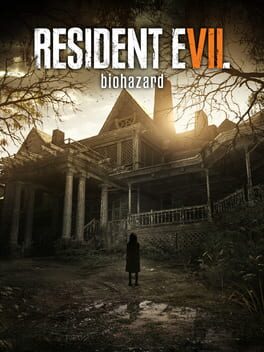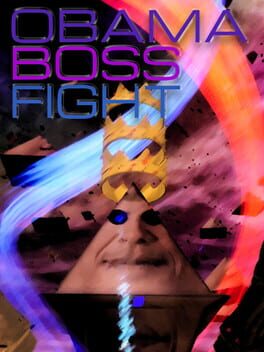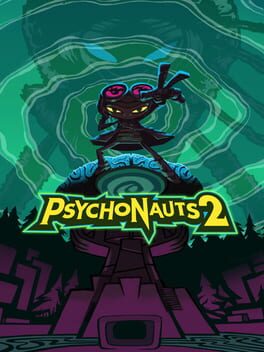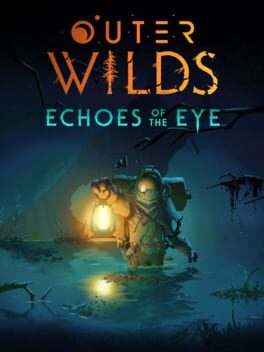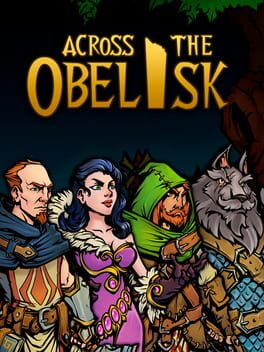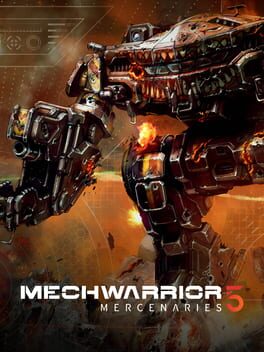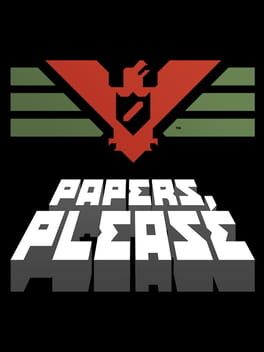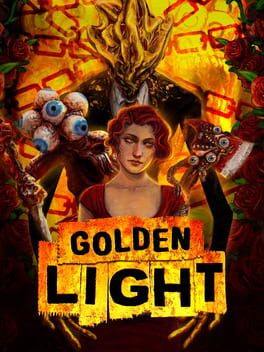AuTomaton
2023
Fleshpunk Raid Simulator with Co-Op is a pretty sweet idea, and I like Meet Your Maker's concepts. The game is aesthetically a bit dry, but it succeeds in both communicating the world of the game through visual and audio background, allowing for player expression in builds, and making things easy to see and asses while playing. The art direction is really quite good to get all of these different needs to work out.
Meet Your Maker also has an interesting tug-of-war with how players are supposed to relate to each other. Players are given each others names and replays and opportunities to see that other people are out there, but unless you're playing with another person in co-op in that instance, the game will feel very lonely. Your only companions in this wasteland are the subclones and biofreaks of the chimera's creation, and the already rotten bones of humanity. It's a lovely feeling to pull out of a game that really doesn't support that level of emotional depth through mechanics. I do hope it's explored more, it may be a pocket gemstone for this game.
But game bad? Yes, game bad. Relying on user-generated content is always risky, and Meet Your Maker does not pull it off well.
MYM's levels are mostly throwaways. Players are not strongly incentivized to make good levels. Even if they were, most players lack the game system knowledge and level design skill to make levels that are good anyways. MYM doesn't provide any tools to teach these skills either.
What players are incentivized to build are levels that are really hard. This itself isn't necessarily bad, but there isn't enough player-base knowledge to make levels that are 'genuinely' hard. As a player, your best bet is to either gimmick the difficulty system to place tricky levels in a lower difficulty bracket (so that people looking for easier levels will get hard ones instead) or to stuff the biggest maps they can buy with as many traps as possible without really thinking about it.
Then look at the raiding experience: MYM is a grind. You have to do a lot of outposts to make significant progress towards any given unlock due to how slowly Cells are generated. I haven't done the pure math, but my inclination is that the fastest way to raid for cells is to do brutal outposts over and over and over again.
These issues combine to encourage players to play long, boring, poorly-designed levels over and over again for minimal gain. It's... uh... not fun.
MYM is also not stable (bug-free) enough for high-level play to be consistently applied. It doesn't matter how well built a champion outpost if pressing the attack button only swings your sword 90% of the time.
Meet Your Maker also has an interesting tug-of-war with how players are supposed to relate to each other. Players are given each others names and replays and opportunities to see that other people are out there, but unless you're playing with another person in co-op in that instance, the game will feel very lonely. Your only companions in this wasteland are the subclones and biofreaks of the chimera's creation, and the already rotten bones of humanity. It's a lovely feeling to pull out of a game that really doesn't support that level of emotional depth through mechanics. I do hope it's explored more, it may be a pocket gemstone for this game.
But game bad? Yes, game bad. Relying on user-generated content is always risky, and Meet Your Maker does not pull it off well.
MYM's levels are mostly throwaways. Players are not strongly incentivized to make good levels. Even if they were, most players lack the game system knowledge and level design skill to make levels that are good anyways. MYM doesn't provide any tools to teach these skills either.
What players are incentivized to build are levels that are really hard. This itself isn't necessarily bad, but there isn't enough player-base knowledge to make levels that are 'genuinely' hard. As a player, your best bet is to either gimmick the difficulty system to place tricky levels in a lower difficulty bracket (so that people looking for easier levels will get hard ones instead) or to stuff the biggest maps they can buy with as many traps as possible without really thinking about it.
Then look at the raiding experience: MYM is a grind. You have to do a lot of outposts to make significant progress towards any given unlock due to how slowly Cells are generated. I haven't done the pure math, but my inclination is that the fastest way to raid for cells is to do brutal outposts over and over and over again.
These issues combine to encourage players to play long, boring, poorly-designed levels over and over again for minimal gain. It's... uh... not fun.
MYM is also not stable (bug-free) enough for high-level play to be consistently applied. It doesn't matter how well built a champion outpost if pressing the attack button only swings your sword 90% of the time.
2023
Pizza Tower excellently pulls together an absurd aesthetic to dress an almost flawless gameplay experience. The play of Peppino traversing the Pizza Tower on foot by himself, which constitutes 95% of the game, spares no expense in terms of artistic detail and level affordance and thought. No matter where you're looking on screen, there is some detail that further communicates the cartoonishness of Peppino, the world he lives in, and his quest. Almost every level is built up in a way that naturally guides the player in and out of every level. Once you know where to start looking, it begins to feel like Pizza Tower is begging you to get your play squeaky clean. It provides so many affordances in how levels are built and how movements and collectible and enemies interact with the player. Pizza Tower knows every minute detail of typical gameplay, and polishes each one to near-perfection, creating a game experience where the act of participation gets to be a discovery of the world, of the systems, of the art, of the music, every single time.
Pizza Tower's only flaw is that all of the non-Peppino game modes don't receive the same level of attention. Some levels don't provide the same affordances that they would otherwise, which makes these alternative modes of play funny detours from gameplay at best and awkward standouts at worst.
Pizza Tower's only flaw is that all of the non-Peppino game modes don't receive the same level of attention. Some levels don't provide the same affordances that they would otherwise, which makes these alternative modes of play funny detours from gameplay at best and awkward standouts at worst.
TBD
2021
2021
The 'game' of Psychonauts 2 is fine. It drags in the middle and the environments get... boring somehow (maybe do to the linear nature of most minds?). The gameplay itself is solid; there're more dimensions to combat than the game initially lets on, so figuring out how to go about fights is rewarding even though they're simpler. Platforming is responsive and the environments at least offer interesting ways to use platforming ability from time to time. I think this balances out to an overall 'fine' experience. It's a 1 foot deep pool of a game, but the water is at least nice.
The reason I don't like Psychonauts 2 is its writing: it tackles concepts of mental illness and recovery really, really, REALLY poorly. Not necessarily from its depictions of mental trauma (I can't really speak to that), but because of Raz and Lucrecia's roles in the game.
The traumatized characters of the game are totally helpless, and rely on the institutional, independent, non-consensual assistance of Raz. Is trauma really something that cannot be overcome, even partially, through the self? Are the traumatized unable to make their own decisions about their own health, and must rely on unilateral care, whether they want it or not? The game raises these very tricky questions, but ignores them.
Maligula being a part of Lucrecia's mind is fine, but saying that the capacity for government-supported genocide is "part of everyone" is totally objectionable. Can anybody be prone to violence when mentally pressed? Yeah, maybe. But the idea that the capacity for institutional atrocity (Maligula drowning peaceful protests at the behest of her monarch) can only be supported by uniquely intense mental illness or a complete failure of personal morals. By insisting that everyone has a Maligula while not acknowledging Lucrecia's personal responsibility for her crimes, Psychonauts 2 communicates the idea that enacting systematic widespread violence is an acceptable consequence of mental circumstances.
I personally lack the words to communicate why divorcing the responsibility for institutional (and in this case, state!) violence from those committing it on the grounds of mental health is bad. Or, at least in a way that's reasonable to read. But, like, it is. Okay? You can't just use "we're all one joker moment away from bombing a Tesco" to handwave government oppression! Hell, that's not even true! I'd need like, a dozen joker moments to even consider lighting up my local Trader Joe's! And I certainly wouldn't do it for the goddamn Feds!
The reason I don't like Psychonauts 2 is its writing: it tackles concepts of mental illness and recovery really, really, REALLY poorly. Not necessarily from its depictions of mental trauma (I can't really speak to that), but because of Raz and Lucrecia's roles in the game.
The traumatized characters of the game are totally helpless, and rely on the institutional, independent, non-consensual assistance of Raz. Is trauma really something that cannot be overcome, even partially, through the self? Are the traumatized unable to make their own decisions about their own health, and must rely on unilateral care, whether they want it or not? The game raises these very tricky questions, but ignores them.
Maligula being a part of Lucrecia's mind is fine, but saying that the capacity for government-supported genocide is "part of everyone" is totally objectionable. Can anybody be prone to violence when mentally pressed? Yeah, maybe. But the idea that the capacity for institutional atrocity (Maligula drowning peaceful protests at the behest of her monarch) can only be supported by uniquely intense mental illness or a complete failure of personal morals. By insisting that everyone has a Maligula while not acknowledging Lucrecia's personal responsibility for her crimes, Psychonauts 2 communicates the idea that enacting systematic widespread violence is an acceptable consequence of mental circumstances.
I personally lack the words to communicate why divorcing the responsibility for institutional (and in this case, state!) violence from those committing it on the grounds of mental health is bad. Or, at least in a way that's reasonable to read. But, like, it is. Okay? You can't just use "we're all one joker moment away from bombing a Tesco" to handwave government oppression! Hell, that's not even true! I'd need like, a dozen joker moments to even consider lighting up my local Trader Joe's! And I certainly wouldn't do it for the goddamn Feds!
2021
2019
Hypnospace Outlaw invites you into a reimagining of the late-90s Internet, and stuffs itself to the brim with detail after emulated detail of what that entails. This game does not cut corners in terms of content, exposition, and set-dressing, insofar as its zone-browsing and no-chatting premise allows. It is a living, dynamic portrait of a very real time in peoples lives, and the game is as ridiculous as it needs to be to make the real nonsense like this that happened IRL to seem real. Hypnospace Outlaw cannot be anything other than a video game. No other form of art can engender the feeling of being in such a microscopic corner of history so vividly and genuinely. I think that makes Hypnospace Outlaw, very, very special.
Just keep in mind that this game is 100% menus. I presume that the late-90s 'net didn't really have gameplay, so it makes sense that this game doesn't either.
Just keep in mind that this game is 100% menus. I presume that the late-90s 'net didn't really have gameplay, so it makes sense that this game doesn't either.
Echoes of the Eye centers on themes of not being afraid to face the truth of fundamental life (that the universe is super big, that we're all gonna die, that we've made mistakes, etc), no matter how scary they are, and I think it succeeds in addressing them very well. Using varying levels of darkness and sight focus to force the player to commit to seeing what's in front of them, even if it frightens them, teaches a bravery and acceptance of what could be that fits really well with Outer Wilds' overall ideas of the tragically limited nature of our lives. And, really, what's hiding out in that darkness isn't even scary monsters, just other people who are trying to go about those same questions and fears in different ways.
I think the feeling of interconnectedness and solemn community from original Outer Wilds is somewhat missing here; locations and discoveries progress very linearly and separately instead of the larger solar web that the base game builds. Things are overly lonely on The Stranger; there's no lost time with any character or friends like in the wider solar system. Raft navigation and general getting about on the stranger is also kind of awkward. I understand why it's there, once you get to breaking open the night areas it's a pretty clever way to guide how a player moves from where to where. But while the player is still figuring out The Stranger as a whole it's limiting and difficult to use for repeated navigation between places.
I think the feeling of interconnectedness and solemn community from original Outer Wilds is somewhat missing here; locations and discoveries progress very linearly and separately instead of the larger solar web that the base game builds. Things are overly lonely on The Stranger; there's no lost time with any character or friends like in the wider solar system. Raft navigation and general getting about on the stranger is also kind of awkward. I understand why it's there, once you get to breaking open the night areas it's a pretty clever way to guide how a player moves from where to where. But while the player is still figuring out The Stranger as a whole it's limiting and difficult to use for repeated navigation between places.
2021
It's Mechwarrior 2, but for modern sensibilities and people who don't use flight sticks. The campaign is not the central feature, but I do believe it's an important creative focal point for this game. Mechwarrior has a sort of roleplaying element to it; it harbors the ideal of making the player feel like a mechwarrior. How the campaign is laid out, with its upkeep costs and travel times and reputations, builds the player narrative of tearing across the galaxy on a warcrime-and-cBil-fueled mercenary roadtrip. It's a fun adventure!
Two important sour points are that the campaign is way too long and your AI lancemates are dumb as bricks. It detracts a little from the commander fantasy (and actually playing the game) when you need to actively cheese your teammates into pretending to be competent to avoid getting roflstomped by the sheer amounts of armor the game will hit you with at higher difficulties.
Two important sour points are that the campaign is way too long and your AI lancemates are dumb as bricks. It detracts a little from the commander fantasy (and actually playing the game) when you need to actively cheese your teammates into pretending to be competent to avoid getting roflstomped by the sheer amounts of armor the game will hit you with at higher difficulties.
2023
2013
Papers, Please has the aesthetic subtly of a brick, which may distract you from the dynamic subtly of actual gameplay.
If you do well, Papers, Please allows you to flow really deeply into a state of focused play. Efficient movement, checking, interactions, etc. make it very easy to ignore the people and focus on the papers, and become a contented cog in the dystopian machine. You may even feel frustration with people, especially when the reason stamp pops up, who make you break out of this loop because you need to interrogate them. Yes, you get more money if you're a good cog, that's a mechanical reward, but being a good cog also lets you have more fun, because it lets you perfect the gameplay loop the game presents to you.
Papers, Please doesn't narratively reward your emotions for being a dystopia cog, but it does ludically reward your emotions for being a cog. That's some interesting dissonance to have going on.
If you do well, Papers, Please allows you to flow really deeply into a state of focused play. Efficient movement, checking, interactions, etc. make it very easy to ignore the people and focus on the papers, and become a contented cog in the dystopian machine. You may even feel frustration with people, especially when the reason stamp pops up, who make you break out of this loop because you need to interrogate them. Yes, you get more money if you're a good cog, that's a mechanical reward, but being a good cog also lets you have more fun, because it lets you perfect the gameplay loop the game presents to you.
Papers, Please doesn't narratively reward your emotions for being a dystopia cog, but it does ludically reward your emotions for being a cog. That's some interesting dissonance to have going on.
2020
Conceptually very cool. Fleshpunk is fun! But I feel like the generative nature of the environment kind of detracts from the horror because everything becomes... predictable? Is that a thing that happens in horror games? I don't know, I don't really play many. Feels like a lot less of a punishing nightmare crawl and more like a very atmospheric coin toss.
But who knows, maybe I'm playing it wrong. Feels like one of those games that you can't really understand how to play until you finish it. Skill issue?
But who knows, maybe I'm playing it wrong. Feels like one of those games that you can't really understand how to play until you finish it. Skill issue?
2022

